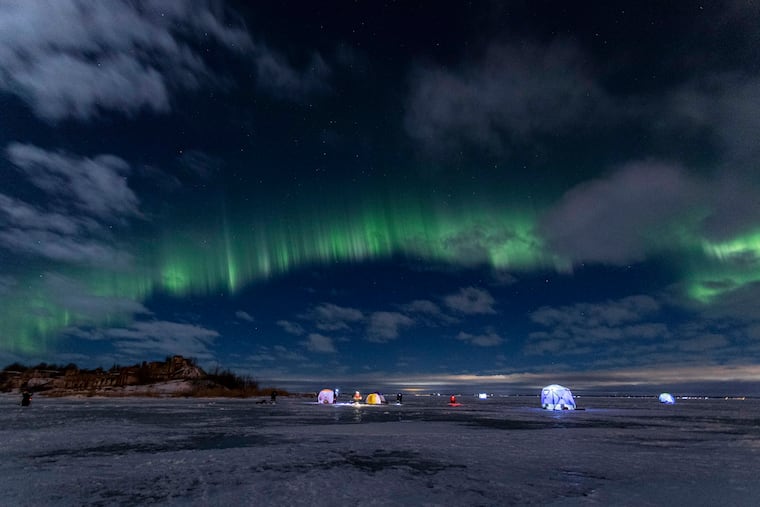Northern Lights could be visible from Pennsylvania the next few nights
It will be worth checking on our northern horizon after the skies grow dark tonight, tomorrow night and Friday night.

The chance of seeing the Northern Lights in Pennsylvania appears to be growing over the next few nights, according to the Space Weather Prediction Center.
Geomagnetic storms are expected to impact Earth beginning today and tonight at the minor G1 level but then escalate to the much stronger G3 level by tomorrow.
That could drive the Kp index – an indicator of the strength of the Aurora Borealis – to 7, which is the level required for people in northernmost Pennsylvania to spot the strange lights in the sky.
If the storms grow a bit stronger, the Northern Lights could be visible even farther south into Pennsylvania.
It will be worth checking on our northern horizon after the skies grow dark tonight, tomorrow night and Friday night.
According to Space.com, the geomagnetic storms “will result from interactions between the strong solar wind blowing from a ‘hole’ in the upper atmosphere of the Sun, called the corona, and the Earth’s magnetic field.”
The Northern Lights Centre explains, “The bright dancing lights of the aurora are collisions between electrically charged particles from the sun that enter the earth’s atmosphere. The lights are seen above the magnetic poles of the northern and southern hemispheres. They are known as ‘Aurora borealis’ in the north and ‘Aurora australis’ in the south.
“Auroral displays appear in many colors although pale green and pink are the most common. Shades of red, yellow, green, blue and violet have been reported. The lights appear in many forms from patches or scattered clouds of light to streamers, arcs, rippling curtains or shooting rays that light up the sky with an eerie glow.
Two full lunar eclipses, blazing fireballs will be part of the night sky show in 2022
“The Northern Lights are the result of collisions between gaseous particles in the Earth’s atmosphere with charged particles released from the Sun’s atmosphere. Variations in color are due to the type of gas particles that are colliding. The most common auroral color, a pale yellowish green, is produced by oxygen molecules located about 60 miles above the earth. Rare, all-red auroras are produced by high-altitude oxygen, at heights of up to 200 miles. Nitrogen produces blue or purplish-red aurora.”
The Space Weather Prediction Center is part of the National Oceanic and Atmospheric Administration.